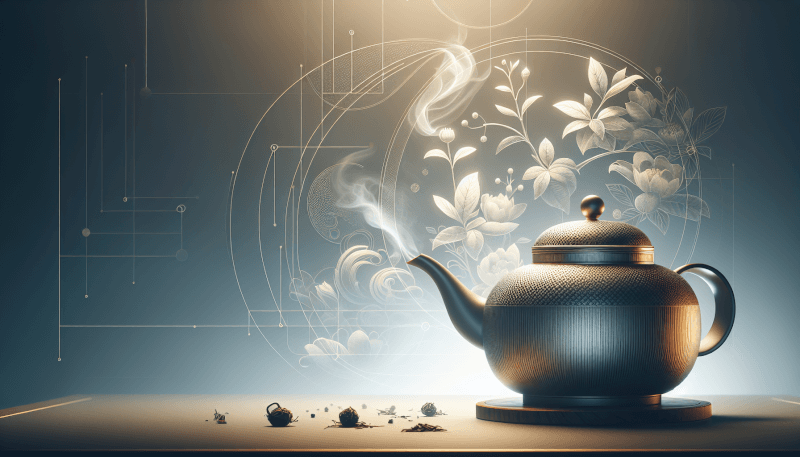Get ready to take your tea brewing skills to the next level with enhanced steeping methods. In this article, we will explore the secrets behind perfecting the art of tea brewing. Whether you’re a seasoned tea enthusiast or just starting your journey into the world of tea, these enhanced steeping methods will help you unlock the full flavor and aroma of your favorite brews. So grab your teapot, relax, and get ready to become a tea brewing master.
Choosing the Right Tea Leaves
Understanding the Different Types of Tea
When it comes to choosing the right tea leaves, it is essential to have a good understanding of the different types of tea available. The most common types of tea include black, green, oolong, white, and herbal teas. Each type has its unique characteristics and flavor profiles.
Black tea is known for its deep and robust flavor, often described as malty or smoky. It is fully oxidized and has a higher caffeine content compared to other types of tea. Green tea, on the other hand, is unoxidized and has a more delicate taste. It is often described as grassy or vegetal and is lower in caffeine.
Oolong tea falls between black and green tea in terms of oxidation levels. It offers a wide range of flavors, from floral and fruity to earthy and toasty. White tea is the least processed among all the tea types and is known for its light and subtle flavors. Finally, herbal teas are not technically considered teas as they do not come from the Camellia sinensis plant. Instead, they are made from herbs, flowers, and fruits, offering a vast array of flavors and health benefits.
Selecting High-Quality Tea Leaves
To ensure a satisfying tea-drinking experience, it is crucial to select high-quality tea leaves. Look for tea that is sourced from reputable suppliers and is labeled as loose-leaf tea. Loose-leaf tea allows the leaves to unfurl fully, releasing their full flavor potential.
Inspect the appearance of the tea leaves. High-quality tea leaves should be whole and unbroken, with vibrant colors and minimal dust or fannings. Pay attention to the aroma, as it should be fragrant and inviting. Avoid tea leaves that smell stale or musty.
Consider the origin of the tea as well. Different regions have distinct tea-growing conditions that contribute to the flavor and quality of the leaves. Some renowned tea-growing regions include Darjeeling in India, Yunnan in China, and Uji in Japan.
Exploring Different Flavor Profiles
Tea tasting is an adventure for the senses, and exploring different flavor profiles can help you discover your preferences. Each tea type has a unique flavor profile, but within those categories, there can be significant variations.
Black teas can range from malty and robust to floral and fruity. Within green teas, you may find grassy, vegetal flavors or more complex profiles with notes of seaweed or roasted chestnuts. Oolong teas offer a wide range of flavors, from floral and creamy to nutty and toasty. White teas have delicate and subtle flavors, often described as floral or sweet. Herbal teas come in a vast array of flavors, including floral, fruity, and spicy.
Consider trying teas from different regions and experimenting with various flavor combinations. Tasting notes provided by tea suppliers can also be helpful in understanding the flavor profiles of different teas. The more you explore, the more you will develop a discerning palate and find the teas that delight your taste buds.
Importance of Water Quality
Purified Water vs Tap Water
Water quality plays a crucial role in brewing the perfect cup of tea. While tap water is readily available for most people, it may contain impurities like chlorine or heavy metals that can affect the taste of the tea. Purified water, on the other hand, has gone through various filtration processes to remove impurities, resulting in a cleaner and more neutral flavor profile.
Using purified water ensures that the taste of the tea is not masked or altered by any unwanted flavors or chemicals. It allows the natural flavors of the tea to shine through, providing a more enjoyable and authentic tea-drinking experience.
Considering Mineral Content
While purified water is generally recommended for brewing tea, the mineral content of water can also impact the taste. Some teas may benefit from water with a higher mineral content, as minerals can interact with the compounds in the tea leaves and enhance certain flavors. However, it is essential to strike a balance, as too many minerals can overpower the delicate flavors of the tea.
Experimenting with different water sources and mineral contents can be a fun way to explore the nuances of different teas. Pay attention to the impact on flavor and find the optimal balance that suits your taste preferences.
Temperature and its Impact on Flavor
Water temperature is a critical factor in brewing tea, as it directly affects the flavor extraction from the tea leaves. Different types of tea require specific water temperatures to achieve the best flavor profile.
Generally, black teas are best brewed with water that has just come to a rolling boil (around 205°F or 96°C). Green teas, on the other hand, are more delicate and should be brewed with water that has cooled slightly after boiling (around 175°F or 80°C). Oolong teas benefit from slightly higher temperatures, ranging from 185°F to 205°F (85°C to 96°C), depending on the specific tea. White teas are the most delicate and require lower temperatures, usually between 160°F and 175°F (70°C to 80°C). Herbal teas can be brewed with boiling water.
By paying attention to water temperature and selecting the appropriate temperature for each tea type, you can ensure that the flavors are extracted optimally, resulting in a well-balanced and enjoyable cup of tea.
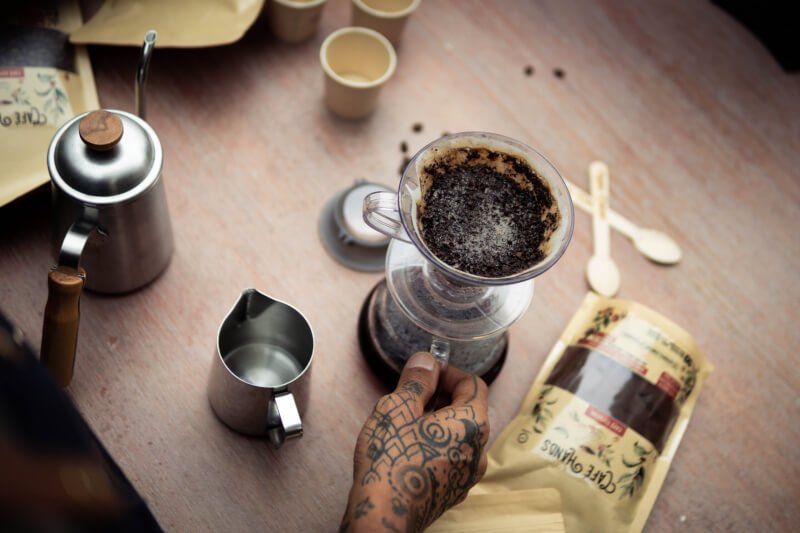
Optimal Water-to-Tea Ratio
Determining the Ideal Ratio
Finding the ideal water-to-tea ratio is essential for brewing a cup of tea that is neither too weak nor too strong. The ratio refers to the amount of tea leaves relative to the amount of water used in the brewing process.
As a general guideline, a ratio of 1 teaspoon of loose-leaf tea to 8 ounces (240 ml) of water is a good starting point. However, this can vary depending on personal preference and the type of tea being brewed. Some teas may require a higher ratio for a stronger flavor, while others may benefit from a lower ratio for a more delicate taste.
By experimenting with different ratios, you can fine-tune the strength of your tea to match your personal preference. Keep in mind that adjusting the ratio will also impact the brewing time, as a higher ratio may require a longer steeping time to extract the desired flavors.
Adjusting Depending on Tea Type
Different types of tea may require slight adjustments to the water-to-tea ratio. For example, black teas are generally brewed with a higher ratio to extract their bold flavors fully. On the other hand, green teas and white teas are more delicate and may require a lower ratio to prevent the tea from becoming bitter or overpowering.
It is essential to read the brewing instructions provided by the tea supplier and experiment with slight adjustments to find the optimal ratio for each tea type. Pay attention to the color, aroma, and taste of the brewed tea to determine if any further adjustments are necessary.
Exploring Pouring Methods
In addition to the water-to-tea ratio, the pouring method can also impact the extraction of flavors from the tea leaves. Pouring techniques like the Gongfu style, where water is poured in short, quick bursts, can intensify the flavor and aroma of the tea. This method is commonly used for oolong and pu-erh teas, allowing for multiple steepings and a more concentrated taste.
In contrast, a slower pouring method can result in a more subtly flavored tea, suitable for delicate green or white teas. Experimenting with different pouring methods can provide an opportunity to explore the nuances of each tea and find the best approach to extract their unique flavors.
Water Temperature Control
The Art of Temperature Measurement
Controlling the water temperature is key to brewing the perfect cup of tea. While some tea enthusiasts rely on intuition or experience to determine water temperature, using a thermometer can provide a more precise measurement.
Digital or analog food thermometers can be used to measure the temperature of the water accurately. Simply insert the thermometer into the water and wait for it to stabilize. Ensure the thermometer is clean and sanitized before each use to avoid any potential contamination.
By measuring the water temperature, you can ensure that the tea leaves are steeped at the optimal temperature, resulting in a well-balanced and flavorful cup of tea.
Methods for Heating Water
There are various methods for heating water to the desired temperature for brewing tea. One of the most common methods is using a kettle on the stove or an electric kettle. These kettles often come with temperature control settings, allowing you to select the desired temperature for different types of tea.
If precise temperature control is essential to you, consider investing in a temperature-controlled water dispenser specifically designed for tea brewing. These devices provide accurate temperature readings and maintain the desired water temperature throughout the brewing process.
Experimenting with Different Temperatures
While specific water temperatures are suggested for each type of tea, feel free to experiment with slightly different temperatures to find the sweet spot that suits your taste preferences. Some teas may benefit from a slightly higher or lower temperature, enhancing certain flavor profiles and nuances.
As you become more familiar with different teas, you may discover that certain kinds of tea are best enjoyed at a temperature slightly different from the recommended range. Don’t be afraid to adjust the temperature and allow your taste buds to guide you towards the perfect cup of tea.
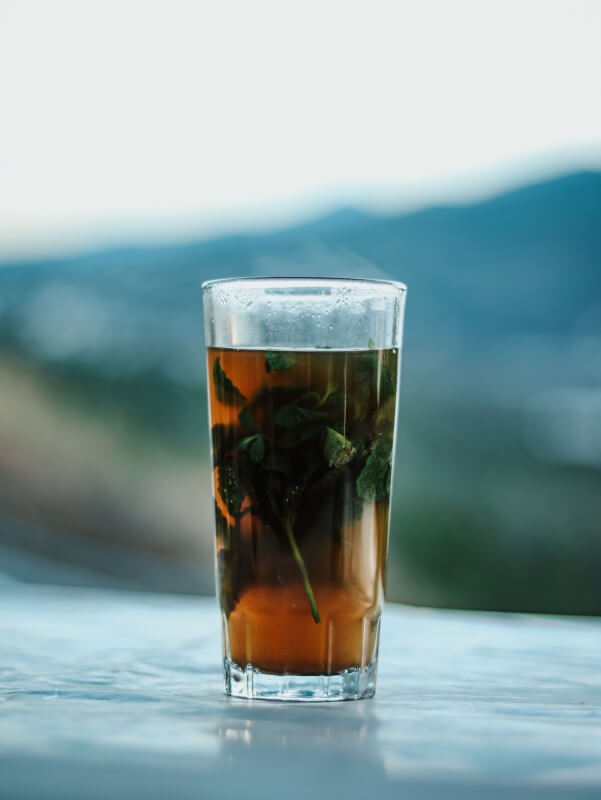
Proper Steeping Time
Understanding Tea Steeping Stages
Steeping is the process of infusing the tea leaves in hot water to extract their flavors and aromas. Understanding the different stages of tea steeping can help you achieve the desired strength and flavor profile.
During the initial stage, the hot water quickly penetrates the tea leaves, releasing volatile compounds responsible for the tea’s aroma. This stage typically lasts for a few seconds, and it is essential to pay attention to any changes in the aroma of the tea.
The second stage is when the flavors of the tea are extracted. The water interacts with the compounds in the tea leaves, resulting in the characteristic taste of the tea. The duration of this stage can vary depending on the type of tea and personal preference.
Finally, the third stage represents the point at which oversteeping occurs. If the tea is left in contact with the water for too long, it can become bitter or astringent. It is crucial to remove the tea leaves from the water at the right time to prevent an unpleasant taste.
Factors Affecting Steeping Time
Several factors can influence the steeping time of tea. The size and shape of the tea leaves can affect the rate at which flavors are extracted. Finely cut leaves or smaller tea particles will release their flavors more quickly than whole leaves.
The type of tea and its oxidation level also play a role. Green teas and white teas tend to steep more quickly due to their delicate nature, while black teas and oolong teas typically require longer steeping times for a more robust flavor.
Additionally, water temperature and the desired strength of the tea can also impact the steeping time. If you prefer a stronger cup of tea, you may opt for a longer steeping time, while a shorter steeping time can result in a lighter, more subtle flavor.
Adjusting Steeping Time for Desired Strength
To achieve the desired strength of tea, it is essential to adjust the steeping time accordingly. If you prefer a stronger cup of tea, you can extend the steeping time by a few seconds or minutes, depending on the type of tea.
However, be cautious not to oversteep the tea, as it can result in a bitter or astringent taste. Taste the tea periodically during the steeping process to monitor its flavor. Once the desired strength is achieved, promptly remove the tea leaves from the water to prevent further extraction.
By experimenting with different steeping times, you can find the perfect balance that suits your taste preferences and creates a harmonious cup of tea.
Advanced Steeping Techniques
Multiple Steepings with Same Leaves
One of the unique aspects of high-quality loose-leaf tea is its ability to withstand multiple steepings. Unlike tea bags, which often contain lower-quality tea dust or fannings, loose-leaf tea allows you to enjoy multiple infusions from the same batch of leaves.
To achieve multiple steepings, increase the brewing time gradually with each infusion. The flavors and aromas of the tea will evolve and transform with each steep, revealing different layers of complexity.
This technique is especially popular in Gongfu-style brewing, where small teapots or gaiwans are used to steep the leaves multiple times. Not only does it allow you to appreciate the tea’s evolving flavors, but it also offers an opportunity to savor the tea ceremony and fully immerse yourself in the tea-drinking experience.
Using Tea Infusers and Strainers
Tea infusers and strainers are practical tools that make steeping loose-leaf tea convenient and mess-free. Infusers are typically small mesh or perforated containers that hold the tea leaves during steeping, allowing water to circulate freely and extract the flavors. Strainers, on the other hand, are used to separate the brewed tea from the tea leaves, ensuring a smooth and leaf-free cup of tea.
When selecting a tea infuser or strainer, opt for one that allows the tea leaves ample space to unfurl and expand fully. Stainless steel infusers or silicone infusers with fine mesh are popular choices, as they are easy to clean and do not interfere with the taste of the tea.
Experiment with different types of infusers and strainers to find one that suits your teaware and brewing preferences.
Exploring Gaiwan and Gongfu Brewing
Gaiwan and Gongfu brewing are traditional Chinese tea brewing methods that offer an elevated and immersive tea-drinking experience. These methods focus on using small teapots, often made of porcelain, and brewing multiple infusions of tea in quick succession.
Gaiwan, which translates to “lidded bowl,” consists of three components: the bowl, the lid, and the saucer. The tea leaves are steeped in the bowl, and the lid is used as a strainer when pouring the tea into cups. This method allows for precise control over the steeping time and water-to-tea ratio, resulting in a concentrated and nuanced flavor.
Gongfu brewing, on the other hand, involves using even smaller teapots, usually made of clay. It emphasizes multiple short infusions, typically lasting for a few seconds, to extract the full flavor potential of the tea leaves. Gongfu brewing requires skill and practice to perfect, but it offers a deeply immersive and rewarding tea experience.
Exploring these advanced steeping techniques can elevate your tea brewing to another level, allowing you to appreciate the intricate flavors and aromas of the tea in a more nuanced way.
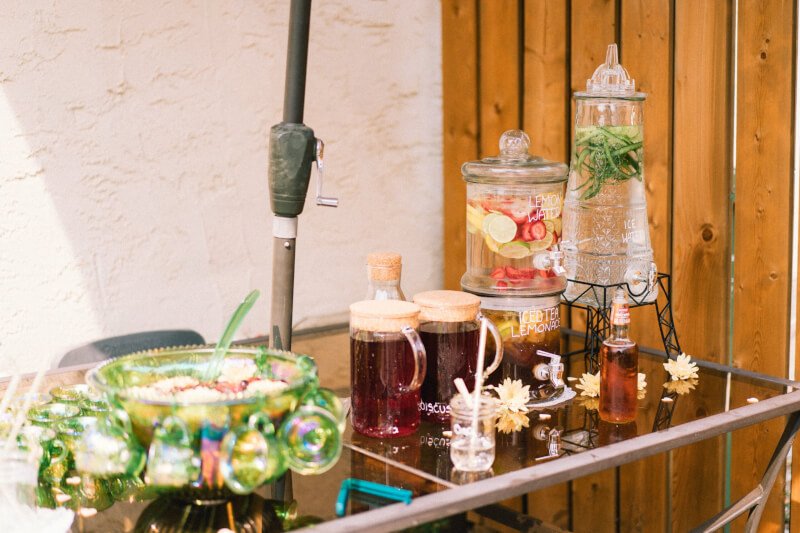
The Role of Teaware
Choosing the Right Teapot or Teacup
Teaware plays a significant role in enhancing the tea-drinking experience. When selecting a teapot or teacup, consider both functionality and aesthetics.
Teapots come in various shapes and sizes, each designed to suit different types of tea. For example, Yixing clay teapots are often used for oolong and pu-erh teas, as they absorb the flavors and develop a patina over time. Porcelain or glass teapots are versatile options that allow you to observe the color and clarity of the brewed tea.
Teacups, too, come in various styles and materials. Porcelain cups are common and provide a neutral canvas to appreciate the color of the tea. Ceramic cups offer insulation, keeping the tea warm for longer periods. Glass cups allow you to observe the tea’s color and clarity and can be particularly captivating for blooming teas.
Ultimately, choose teaware that resonates with you and complements your tea-drinking ritual.
Exploring Different Materials
Teaware is often made from various materials, each offering unique characteristics and qualities that can impact the taste of the tea.
Porcelain is a popular choice for teaware, as it is non-reactive and does not impart any flavors onto the tea. It provides a clean and pure experience, allowing the flavors of the tea to shine through.
Clay teapots, particularly those made from Yixing clay, are highly regarded by tea enthusiasts. Yixing teapots are known for their porous nature, which allows them to absorb the flavors of the tea over time, enhancing the taste with each use. These teapots require dedicated care and should be dedicated to specific types of tea to prevent flavor mingling.
Glass teaware is another option, particularly for those who enjoy observing the color and clarity of the tea. Glass does not interact with the tea, allowing for a pure and unadulterated flavor experience.
Caring for Teaware
Proper care and maintenance of teaware are crucial to preserve its longevity and ensure a consistent tea experience. After each use, rinse teapots and teacups with warm water to remove any remaining tea residue. Avoid using soap, as it can leave behind unwanted flavors or scents.
Allow teaware to air dry naturally, as using a cloth or towel may introduce lint or unwanted odors. Porcelain and glass teaware can be stored safely in a tea cabinet or on display shelves. Clay teapots, however, require special care. After use, rinse them thoroughly with clean water and allow them to dry completely before storing. It is best to store clay teapots with the lid separate to prevent the growth of mold or fungus.
With proper care, teaware can become cherished companions in your tea journey, accompanying you through countless brews and infusions.
Enhancing Flavor with Additions
Experimenting with Milk and Sweeteners
While purists may argue that tea should be enjoyed on its own, adding milk and sweeteners can create unique and delightful flavor profiles. Milk, in particular, adds a creamy and indulgent touch to certain types of tea, such as black teas and chai blends.
Consider experimenting with different milk options, such as dairy milk, plant-based alternatives like almond or oat milk, or even condensed milk for a rich and sweet taste. Add the milk to your preference, starting with a small amount and adjusting according to your taste.
Sweeteners like sugar, honey, or stevia can also enhance the flavors of certain teas, particularly herbal blends or teas with more robust flavors. Adjust the sweetness to your liking, keeping in mind that some teas may require a more subtle touch to avoid overpowering the natural flavors.
Infusing Tea with Herbs and Spices
Taking the art of tea blending to another level, infusing tea with herbs and spices can create unique and personalized flavor combinations. By adding dried herbs, such as lavender or chamomile, or spices like cinnamon or cardamom, you can create a tea blend tailored to your taste preferences.
Experiment with different combinations and ratios, allowing the flavors to meld together over time. Store the blended tea in an airtight container to preserve its freshness and enjoy the aromatic and flavorful journey with every sip.
Creating Unique Tea Blends
If you enjoy the creative process, consider creating your unique tea blends. Start by selecting your preferred base tea, such as black, green, or white tea. From there, add complementary herbs, spices, or dried fruits to create a harmonious flavor profile.
Experimenting with different tea blends can be a fun and rewarding experience, allowing you to personalize your tea-drinking ritual and share your creations with others. Keep notes on your blends, noting the ratios and flavor profiles, to recreate your favorite combinations in the future.
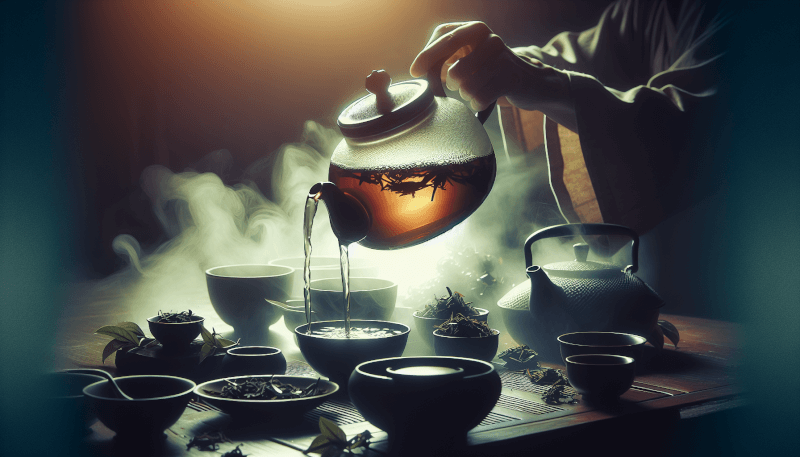
Paying Attention to Brewing Techniques
Understanding Different Steeping Methods
Various steeping methods can be employed to suit different tea types and brewing preferences. Some popular steeping methods include the Western-style, Gongfu-style, and Iced tea brewing.
Western-style brewing involves steeping the tea leaves in a teapot or an infuser for a single infusion. This method is suitable for most tea types and is easy to follow. Simply measure the appropriate amount of tea leaves, pour hot water over them, and steep for the recommended time.
Gongfu-style brewing, as mentioned earlier, is an advanced steeping method that involves multiple short infusions in small teapots. It is often used for oolong and pu-erh teas, allowing for a concentrated and sensory-rich tea experience.
Iced tea brewing involves steeping the tea leaves in hot water, then allowing it to cool before pouring it over ice. This method is perfect for refreshing iced teas during hot summer days and offers a creative twist to traditional tea brewing.
Understanding the different steeping methods allows you to choose the one that aligns with your taste preferences and desired tea-drinking experience.
Adapting Techniques for Different Teas
Each type of tea may require specific adaptations to the brewing techniques. For example, black teas generally benefit from longer steeping times, while green and white teas may require shorter steeping times to prevent bitterness.
Take into consideration the unique characteristics of the tea type, including its oxidation level, flavor profile, and leaf size. Adjust the water temperature, steeping time, and water-to-tea ratio accordingly to bring out the best flavors and aromas.
Additionally, it is essential to read the brewing instructions provided by the tea supplier. They often provide insights and recommendations specific to the tea you are brewing, guiding you towards the optimal brewing technique.
Learning from Tea Masters and Experts
To truly master the art of tea brewing, seek inspiration and guidance from tea masters and experts. The world of tea is rich with knowledge and traditions passed down through generations, and learning from those who have dedicated their lives to tea can inspire and deepen your understanding.
Attend tea workshops, tastings, or masterclasses to learn from renowned tea masters. These events provide the opportunity to witness the brewing techniques firsthand and ask questions to further your knowledge. Online resources, books, and documentaries on tea can also provide valuable insights into the vast world of tea brewing.
By continuously learning from experts and immersing yourself in the art of tea brewing, you can refine your techniques and develop a profound appreciation for the intricate flavors, aromas, and cultural significance of tea.
Appreciating the Art of Tea Tasting
Using All Your Senses
Tea tasting is a multisensory experience that engages all your senses. Beyond the enjoyment of sipping a cup of tea, paying attention to the visual, olfactory, and tactile aspects can enhance your appreciation of the tea.
Observe the color and clarity of the tea in your cup. Note the variations in shades and the way the light plays off the liquid. Appreciate the aroma that rises from the tea, allowing it to envelop your senses. As you take a sip, focus on the flavors that dance on your palate, noting any nuances or complexities. Finally, feel the texture of the tea in your mouth, savoring each sip as it lingers.
By actively engaging your senses, you can fully immerse yourself in the art of tea tasting, discovering new layers of depth and character in each cup.
Noting Aromas and Flavors
Tea tasting involves training your palate and olfactory sense to identify and appreciate different aromas and flavors. Start by familiarizing yourself with common tasting notes associated with different tea types. These notes may include floral, fruity, earthy, woody, or herbal characteristics.
As you explore different teas, pay attention to any aromas or flavors that stand out to you. Note the specific descriptors you detect and how they evolve throughout the tasting. This process of sensory exploration can help you develop a discerning palate and an expanding repertoire of tasting vocabulary.
Developing a Discerning Palate
Like any skill, developing a discerning palate in tea tasting takes time and practice. Regularly taste a variety of teas, noting their nuances and flavors. Experiment with different brewing techniques, water temperatures, and steeping times to understand how these factors impact the taste.
Consider participating in organized tea tastings or blind tastings to challenge your taste buds and expand your sensory perception. Compare different teas side by side to identify the subtle differences and appreciate the unique qualities of each.
As you continue on your tea journey, your palate will become more refined, allowing you to appreciate the art of tea brewing and taste the intricate flavors hidden within each cup.
Mastering the art of tea brewing with enhanced steeping methods is a journey of exploration, patience, and appreciation. By understanding the different types of tea, selecting high-quality leaves, and paying attention to water quality, temperature, and ratio, you can create the perfect cup of tea. Experimenting with advanced steeping techniques, teaware, and flavor additions allows for an even more personalized and enchanting tea experience. With each sip, you delve deeper into the world of tea, using your senses to appreciate the delicate flavors and aromas, and developing a discerning palate. Enjoy the journey and embrace the art of tea brewing.
